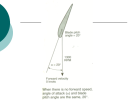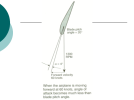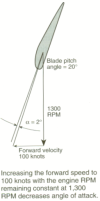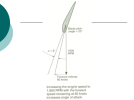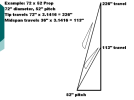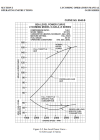Hello BenF,
I'm pretty slow on the keyboard, so several others have answered your questions while I was typing this...and making coffee. Nonetheless, I'll post anyway. Propellers and their aerodynamic properties are complicated and often misunderstood. Fortunately it's not necessary to be an expert in order to operate the airplane safely and efficiently, but a solid grasp of the basics is certainly helpful in the real world, not to mention the written test and the examiner's inquisition.
So, a question: I watched a YT video on the Propellers. As I hear, all props are constant speed, some have a selectable pitch. Correct?
It is not correct to say that all props are constant speed. Here is a brief overview of different propeller types found on general aviation airplanes:
Fixed-pitch: Propeller blade angle cannot be changed.
Ground Adjustable: Blade angle can be adjusted by hand (or with a tool). Obviously accomplished with the aircraft on the ground, and much less dramatic with the engine stopped.
"Aeromatic" variable pitch: a vintage design rarely encountered today, so perhaps the less said here the better.
Variable pitch: Pitch can be changed while the engine is running, but there is no governor to maintain a constant RPM. Well, actually there is a governor: the pilot's hand on the propeller control.
Constant speed: Blade pitch can be changed while the engine is running. A governor in the pitch control system maintains the RPM set by the pilot through a wide range of power settings and airspeeds.
If yes, an aircraft with a variable pitch, (constant speed) propeller, set to fine pitch, accelerates down the runway, the
1. RPM would stay constant, right?
2. What about the blade pitch angle? Would that increase/ decrease/ stay the same?
3. What about the Angle of Attack? As I understand, due to the forward speed, the angle of attack should decrease, right?
1. Theoretically true, perhaps, but not necessarily in practice. RPM at the beginning of the takeoff roll (static RPM) is generally determined by the propeller system's low pitch (fine pitch) stop and the actual power being produced by the engine. RPM may be less than the maximum limit at the beginning of the takeoff roll, but should increase to the limit as airspeed increases.
2. During takeoff roll with the propeller control set to maximum RPM, blade angle will remain at its low pitch stop until RPM reaches the limit, then increase as necessary to maintain maximum RPM as airspeed continues to increase.
3. Your understanding is correct, insofar as it applies to a fixed-pitch propeller. As airspeed increases, the angle of attack (AoA) of the propeller blades decreases. With a constant speed propeller system, as airspeed increases the propeller governor will act to increase the pitch of the blades as necessary to maintain the RPM set by the propeller control. Conversely, when airspeed decreases, the governor will decrease pitch to maintain RPM. What the governor is really doing is balancing the engine power against the aerodynamic drag on the propeller blades. When engine power is constant and airspeed changes, the governor changes blade pitch so as to maintain a constant blade AoA, and thus constant aerodynamic drag on the propeller, which results in a constant RPM. If engine power increases or decreases, the governor increases or decreases blade pitch, therefore increasing or decreasing blade AoA which results in a corresponding increase or decrease in drag as necessary to maintain a constant RPM.
– What about the blade pitch angle of attack? (Again: I am not sure how to answer this question. Because of the forward acceleration the relative wind angle changes, so the relative airflow in relation to the chord line should decrease)
Based on the explanation above, with a constant speed propeller the propeller control sets desired RPM, not blade angle. The governor then adjusts blade angle to maintain the desired RPM. There are no fly
wheels involved: propeller governors have fly
weights (different from a flywheel) which act against a spring to maintain desired RPM. During takeoff, the propeller control is set for maximum RPM. As airspeed increases, the governor will maintain maximum RPM by adjusting blade angle as necessary.

